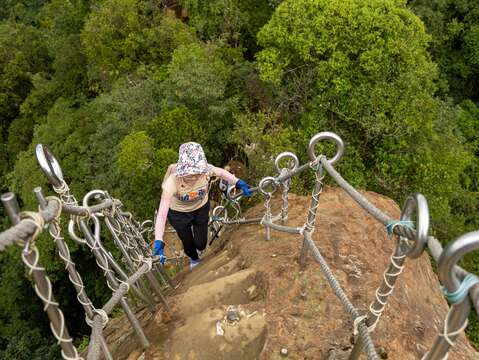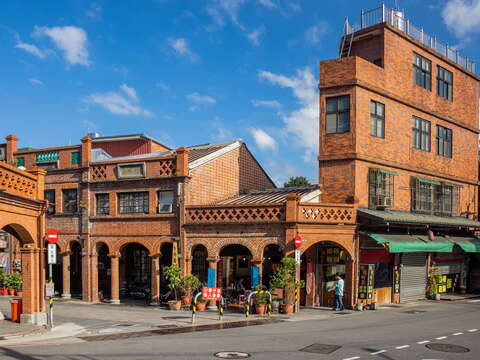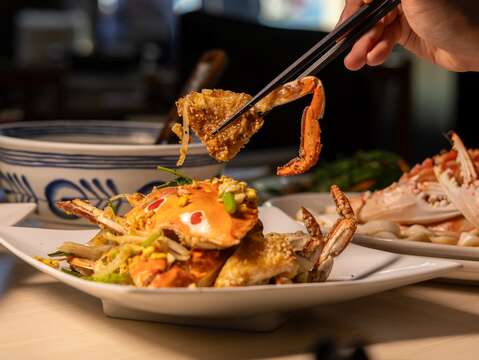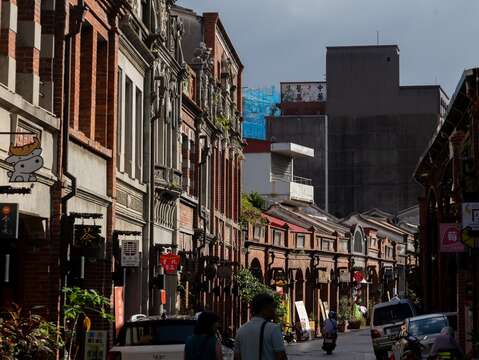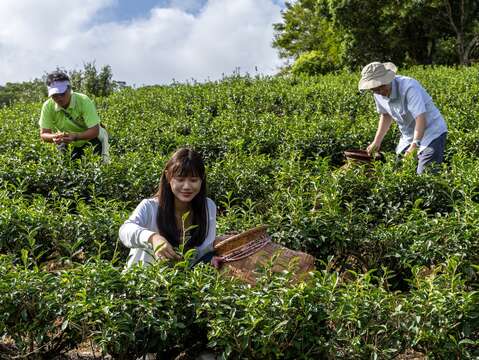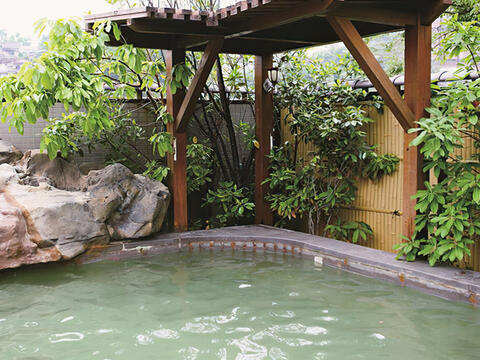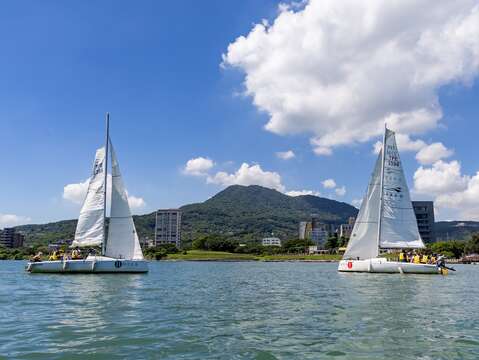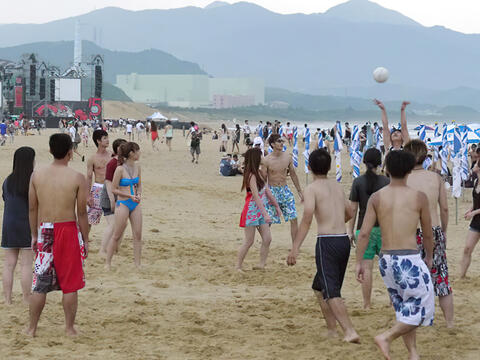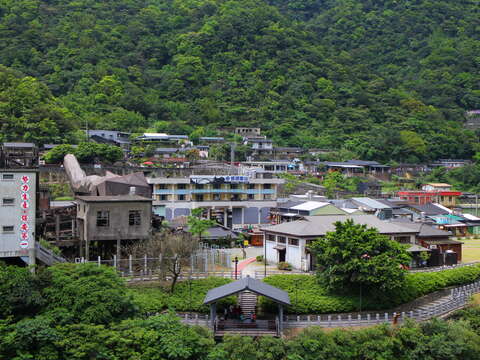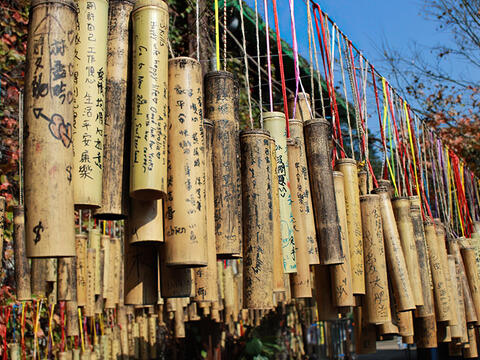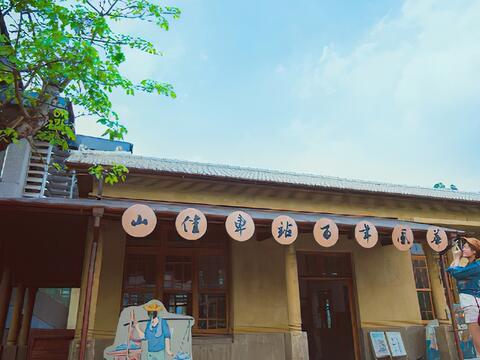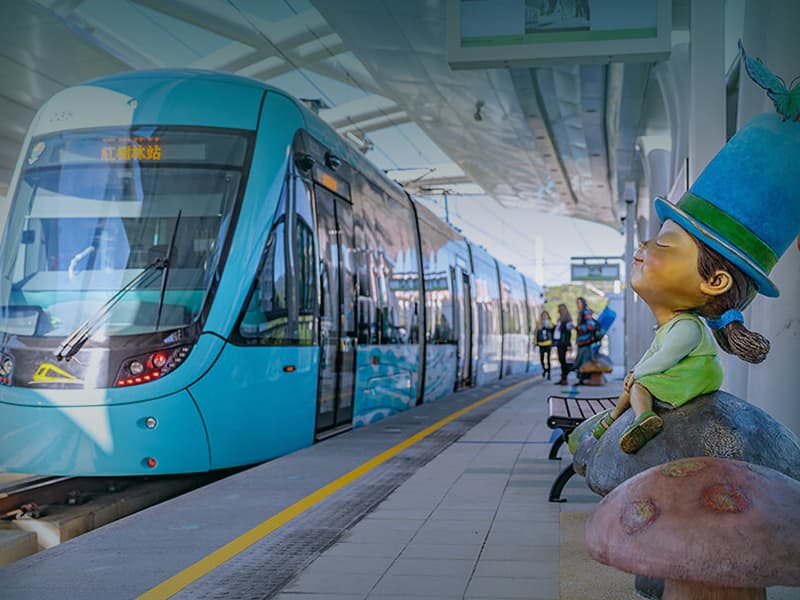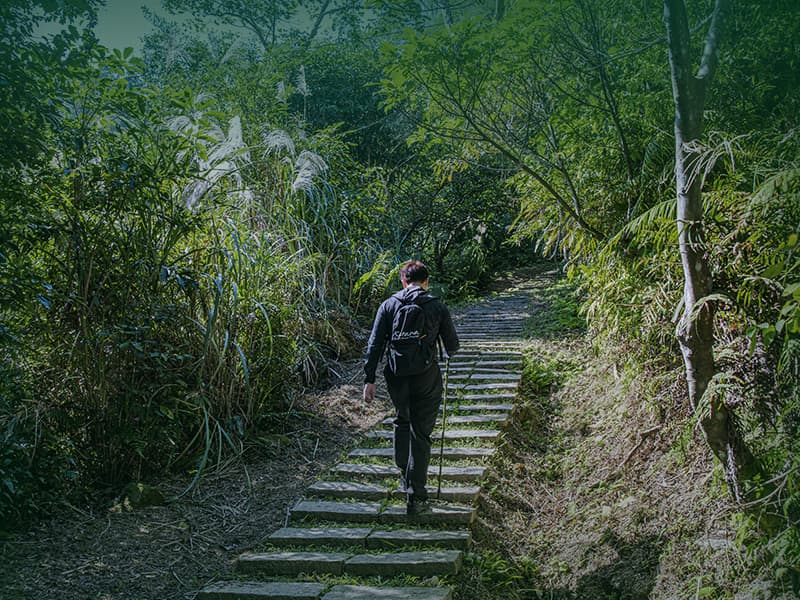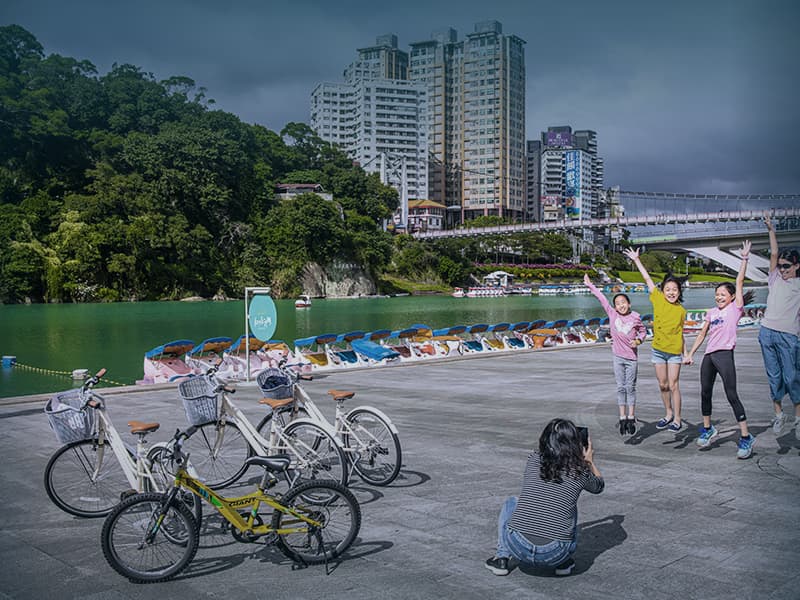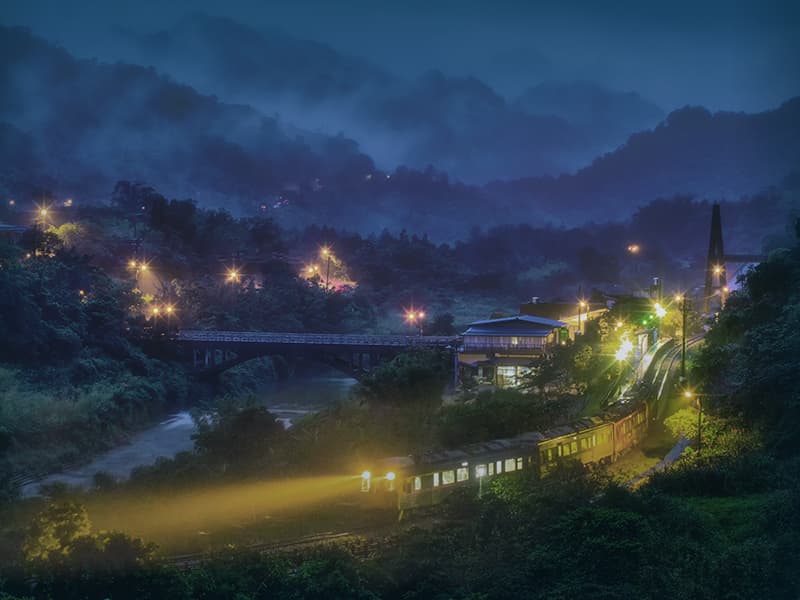Featured theme itineraries
Recommendation update
Best itineraries of every district at once
- Smile Trails to Hometown Mountain-Sky Lantern Tour in Pingxi Xiaozi MountainThe Smile Trails of New Taipei City connects the shallow mountainous areas of Shulin, Yingge, Sanxia, Tucheng, Zhonghe, Xindian, Shiding, Shenkeng to Pingxi, promoting residents in the metropolitan area to walk into the mountains near their homes. Pingxi District is at the far right of this smiling curve. Pingxi, internationally famous for its sky lanterns, has a deep mining culture and many excellent hiking trails. Take the Taiwan Railway Pingxi Line or Taiwan Travel 795 Mucha Pingxi Line to Pingxi Station, challenge the 90-degree vertical hiking trail of Xiaozishan, and go deep into Pingxi and Jingtong. Learn to make sky lanterns and visit the "Yijian.Jingtong Ancient Art Life" museum to explore the cultural landscape of Pingxi. The main settlement of Pingxi is in the valley of the upper reaches of the Keelung River. On the river's south bank stand more than 20 independent peaks, commonly known as the 24 Xiaozi Mountains, among which Xiaozi Mountain, Cimu Peak, and Putuo Mountain are the most famous. The height of each peak is between 300 and 500 meters above sea level. The mountain is low but very steep. Under the guidance of the tour guide, people arrive at the most spectacular section of Xiaozi Mountain. Look at the nearly vertical hiking trail before them. People couldn't help but be shocked by the towering stone peaks. Overcome the inner fear and climb the suspended steel ladder residents and veterans built. Take one step at a time and move steadily towards the sky. ❗️We do not recommend those who fear heights climb this hiking trail section. Climbing to the top of the 360-meter-high Xiaozi Mountain, you can overlook the railway towns of Pingxi and Jingtong and the endless mountain ridges. People can see that Mount Cimu and Mount Putuo, also independent mountain peaks with majestic momentum, are located behind. 👉The space at the top of Xiaozi Peak can only accommodate 5-6 people simultaneously. In case of a large crowd of climbers, please give others way politely. After the magnificent Xiaozi Mountain hike, return to Pingxi Station and walk into the blue and white Little Greece Restaurant. Here, enjoy the restaurant's signature dishes, such as rice noodles with oversized neritic squid and osmanthus coffee, to replenish your fatigue after hiking. Come to the Smile Trails foothold on Pingxi Old Street—TakeYourTime Cafe to learn the techniques of making sky lanterns. Coming to Pingxi is no longer just about releasing sky lanterns. Under the guidance of the sky lantern master, everyone with skillful hands gradually forms sky lanterns. With environmental protection as the starting point, the Pingxi sky lanterns are made of recyclable and degradable materials, from paper and frames to adhesives. Let the sky lanterns, a cultural image representing Pingxi and Taiwan, continue to fly into the sky with everyone's wishes under the global consensus of zero carbon emissions. Going down the ramp in front of Jingtong Station, an elegant Japanese-style building is on the Keelung River bank. The predecessor of this building, built in 1939, was the Pingxi Guesthouse of TaiYang Mining, the largest enterprise in Pingxi's black gold era. The guesthouse and outdoor courtyard have more than 600 pings, a rare large-scale academy-style building in Taiwan. There are VIP rooms, a conference hall, a cafeteria, a bathhouse, a recreation room, a billiard room, a library, and other facilities here. It was the leading entertainment venue in Pingxi at that time. As mining stopped in Pingxi, the guesthouse was also closed. 2003, it was designated a historic site, and the exhibition company is currently taking over the guesthouse. After restoration, it has become the "Yijian.Jingtong Ancient Art Life " private art museum. Inside, they display various ingenious artworks and promote the glorious mining history of Pingxi. Through the explanation of professional tour guides, appreciate the building's three corridors, three entryways, and six ceilings and wander in Japanese-style aesthetics. 👉The "Yijian.Jingtong Ancient Art Life" private art museum is now adopting a reservation system that allows visitors to reserve a visit time online in advance.
- Get going! Experience one day of in-depth Hakka culture of Sanxia."Hakka, indigo dyeing, and old streets" are probably the three main impressions that come to mind when thinking of Sanxia. Sanxia was formerly known as "Sanchiaoyung," and "yung" means water waves in Taiwanese. Hengxi, Sanxia River, and Dahan River converge here, forming a triangular plain. The place name shows the characteristics of the past century - abundant water resources and open plains. The Hakka immigrants in Sanxia engaged in the dyeing, tea, and camphor industries with rich natural conditions as the background. Moreover, the rivers crisscrossed the area, enabling the transportation of large quantities of cloth, making the dyeing industry a thriving industry. To get to know Sanxia, start with the indigo dyeing experience. Wandering around the former Sanchiaoyung Street (now called "Sanxia Old Street") and visiting the New Taipei City Hakka Museum to experience the collision of Hakka culture from the past to the present. ▲ Sanxia was once a significant center of the indigo dyeing industry. (Photo source: authorized and provided by Can Culture Art and Nature) Here is the significant center of indigo dyeing, a part of Hakka culture. Sanxia is a place with many hills, suitable for growing the blue-dyed plant "Assam Indigo." The confluence of rivers also provides advantages for leaching and river transportation. Hakka immigrants took advantage of the perfect geographical conditions and developed the treasures of this land. The place once experienced a prosperous era with many dyeing factories until the introduction and popularization of chemical dyes. When visiting Sanxia Old Street, people still see the old dyeing workshop plaques hanging high. A group of young people who returned to their hometown, holding the concept of local creation, rented a century-old house on Qingshui Street next to Sanxia Old Street and jointly established "Can Culture Art and Nature" to maintain the gradually declining culture. It provides a traditional craftsmanship experience and a canteen with fermented and brewed local ingredients. ▲The courtyard of Can Culture Art and Nature, nestled against the century-old house, is shaded by large trees and full of greenery. Participating in Can Culture Art and Nature's DIY blue dyeing, the instructor will start by tracing the history of blue dyeing in Sanxia and then delve into the principles and techniques of blue dyeing. Through various methods of tying, determine the pattern differences on the fabric. After designing each pattern, the next step is to immerse the fabric in a traditional dyeing vat, gently massage it, and finally disassemble the tying tools. Drying in a well-ventilated place helps the dye to oxidize, and the color will gradually turn blue. ▲ Dip the tied fabric into the dye vat and press it gently. (Photo source: provided by Can Culture Art and Nature) Once welcomed by the Hakka people, the blue dress is wear-resistant, dirt-resistant, and can be repeatedly dyed. As part of the Hakka culture of Sanxia, through a complete experience, people can understand the unique connotation of blue dyeing in Sanxia from a new perspective. It is not only a superficial living craft but also carries the simplicity that the Hakka people adhere to. Nowadays, many local dyeing workshops have launched course experiences and held the Sanxia Blue Dyeing Festival to allow this beautiful craft to take root in Sanxia and continue well. ▲ Dry in a well-ventilated place to help the dye solution oxidize. (Photo source: provided by Can Culture Art and Nature) 👉 Registration Information for Indigo Dyeing Experience DIY of Can Culture Art and Nature .The class opening has over six or more people, and participants must register three days in advance. .Course time: Morning session 10:00 (holidays only) / Afternoon session 14:00 (weekdays and holidays). .The actual situation is subject to the organizer. Explore local cuisine in the unique old street that combines Minnan and Western styles. After experiencing indigo dyeing, visit the nearby Sanxia Old Street to visit the ancient sites and eat delicious food. It feels like traveling through time and space. Walking on Sanxia Old Street, it seems to see still the scene of people transporting coal and camphor wood on the road. This settlement street, which faces the river and the mountains, combines ancient Greek columns, Roman arches, and Baroque decorations. The long red brick arcade is a check-in spot for tourists. ▲Sanxia Old Street is an S-shaped street built according to the terrain, and the red brick arcade is a tourist must-photograph attraction. The must-try food in Sanxia Old Street is not only the Golden Croissants. It would help to catch the original Golden Croissant ice cream. The modified croissant cup used to hold it has a crisper taste. There are also many ice cream flavors to choose from. Everyone should have an ice cream to cool down when the autumn heat comes. Handmade tofu pudding made according to the ancient method, rice blood with a unique garlic sauce, and braised dishes made with Chinese medicine and fruits and vegetables are also classic foods. Taste every deliciousness for just coins' price! ▲ The most famous one is the Golden Croissant of Sanxia, which has also developed many extension products, such as Golden Croissant ice cream. 👉 Read more: Sanxia Old Street Tour Guide (Sanxia Old Street Shopping District Official Website) It is a comprehensive collection of Hakka history, culture, and art, a place for education and entertainment. With a satisfying meal, why not walk to the " New Taipei City Hakka Museum," only a ten-minute drive from Sanxia Old Street? The round earthen buildings come into view with Hakka architectural elements such as the Vochang (Hakka dialect for "the place for drying grains in sunlight ") and corridors. The gun holes on the outer wall and the watchtowers at the commanding heights are all meant to prevent and resist foreign invasions and have rich landscape features. ▲ The earthen building is not only eye-catching in appearance but also incorporates Hakka architectural elements. Entering the New Taipei City Hakka Museum, the central theme is the history and culture of Taiwan's Hakka people. The permanent exhibition of cultural relics is from multiple perspectives, including clothing, utensils, and art. A ceramic boutique area and traditional clothing display also incorporate Hakka imagery into artworks. They even combine blue dyeing and floral fabrics with Barbie dolls, using features such as slanted plackets, fasteners, and culottes to create a unique Hakka Barbie. Moreover, there are occasional special exhibitions of Hakka artists to showcase the artistic styles and features created by the New Taipei Hakka people under the changing environment. 👉Read more: Current Exhibitions at New Taipei City Hakka Museum ▲ For more information about current exhibitions, please visit the official website of the New Taipei City Hakka Museum. The gourmet restaurants in the park can satisfy your cravings for classic Hakka dishes that are "salty, fragrant, and fatty" or afternoon tea snacks such as steamed cakes and mochi. If you want to experience the Sanxia Hakka culture in New Taipei City, visiting the New Taipei City Hakka Museum is the first choice for physical, mental, and spiritual enrichment!
- "Spend some Time" to Travel to Wanli and Taste Autumn Crabs in AutumnThe Taiwanese rain trees on the streets are blooming yellow flowers, the maple trees on the hillside are turning red, and the ground is no longer hot at night. The cooling temperature in northern Taiwan is the best time to taste autumn crabs. The Route 2 Taiwan of autumn has lost the passion and blood of summer and replaced gourmets' praise. Come to Wanli in autumn, go to Yehliu Geopark and Ocean World, and see the strange rocks and beautiful stones up close, get to know the marine life, and then go to the nearby Yehliu Fishing Port to "Spend some Time" to feast on the plump Wanli crabs! Yehliu Geopark, a world-class scenic spot, is a cape where the remnant of Datun Mountain extends into the sea. Because of weathering, sea erosion, and crustal movement create mushroom rocks, erosion caves, tofu stones, candle-shaped rocks, and potholes. The cool autumn is the most comfortable time to visit Yehliu Geopark. Along the 400-meter-long coastal trail, appreciate the masterpiece of nature. The must-visit superstar in the geological park is "Queen's Head," a unique mushroom rock located in the second area of the cape. Its elegant curves seem to resemble a queen gazing into the distance, and it is the symbol of Yehliu and even Wanli. The "Charming Princess" in the first area of the cape has a ponytail-like shape and has become increasingly popular in recent years. It is a popular check-in spot in Yehliu. The circular building next to the ticket office of the Geological Park is Taiwan's oldest brand of marine zoo - Yehliu Ocean World. The 2F Sea Elves Education Hall has a 10-story diving platform. The performers will climb up the platform and dive into the pool. Their superb skills will cause the audience to applaud continuously. Then the performances of animal stars such as sea lions and dolphins will occur. Under the guidance of the keepers and host, the audience will further understand the habits, ecological and physical characteristics of marine life, and rescue knowledge of stranded animals in the wild. B1 is the Underwater World Exploration Hall. Traveling through the underground cave passages, you can see the marine life in the Yehliu sea area through large glass windows, including cute clownfish, fierce pink-tail triggerfish and sharks, and living fossils - horseshoe crabs, which let people feel in a blue crystal dragon palace. Wanli Crab Yehliu Fishing Port on the west side of Yehliu Cape is a central hub for catching Wanli crabs. The Wanli fishermen have advanced catching techniques and a large fleet. Every autumn, they go to the "Northwest Fishery" off the coast of Cape Fugui to catch crabs, accounting for more than 80% of the total crab supply in Taiwan. There is a seafood street next to the fishing port. The large water tanks at the door of each restaurant, filled with live Wanli crabs and various seafood, allow people to choose from a wide variety of fresh seafood. There are three main species of Wanli crabs: three-spotted crabs, flower crabs, and ridged swimming crabs. The New Taipei City Government completed the registration of the Wanli crab trademark in 2014, making it the number one sea crab brand in Taiwan. Using various cooking methods, you can steam or boil the plump autumn crabs in soup to bring out the delicious crab meat. Located in Dong-Ao Fishing Harbor east of Yehliu Cape, the Elisa Coffee, with an unparalleled sea view, is a good choice for a lazy afternoon. The ample space on two floors and the large windows let people to enjoy the Yehliu Geopark and Camel Peak leisurely. The café has a wide selection of exquisite drinks and unique desserts, such as marshmallow chocolate pizza with a salty and sweet taste, which is a surprise in every bite. After having the sweet and delicious Wanli crab and enjoying the beautiful scenery of Yehliu, remember to visit the Guihou Crab Theme Park before leaving Wanli. This sea view park with the theme of Wanli crab has many cute giant crab doll statues, adding lively colors to your autumn trip to Wanli.
Maybe you like

